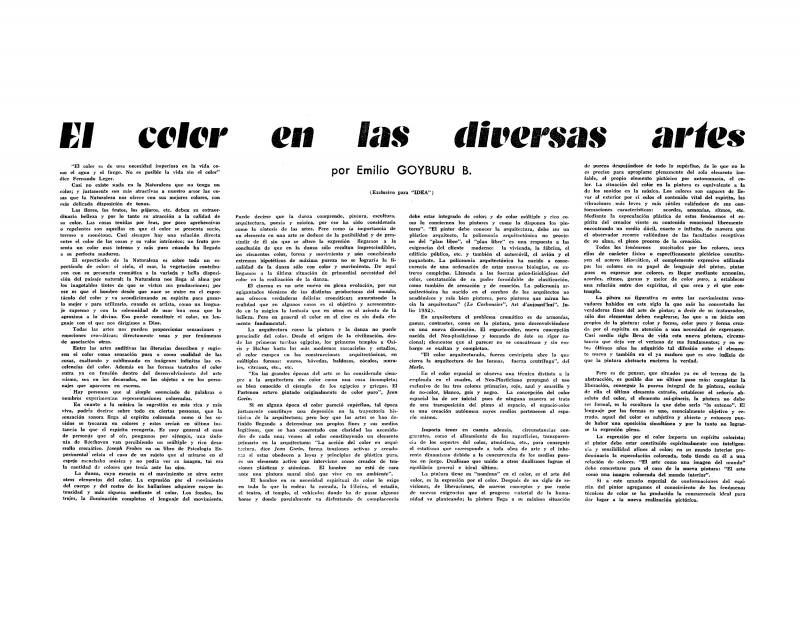In this text, Emilio Goyburu responds to an article by Francisco Abril de Vivero published in the same issue of the journal Plástica (Lima, 1951).Whereas Abril de Vivero warns against the possible extremism of abstraction, Goyburu defends non-figurative art; both men were very active in the publication.
A group of artists committed to modernism—among them outstanding painters Carlos Quizpez Asín (1900–83) and Ricardo Sánchez (1912–81)—launched the journal Plástica in Lima in 1951; just three issues were published over the course of one year. Though short-lived, the publication played an important role in communicating avant-garde tendencies at the height of the debate on abstract art—a polemic that began in May 1951 pursuant to statements by painter Fernando de Szyszlo (Lima, b. 1925) [see in the ICAA digital archive “Dice Fernando Szyszlo que no hay pintores en el Perú ni América…” (doc. no. 1137793); and others]. Painter Emilio Goyburu (1897–1958) was one of the most enthusiastic contributors to Plástica. He was known for his adherence to the incipient avant-garde in the Peruvian capital and for his work with a Cubist bent produced as early as the 1920s. Goyburu’s commitment to modernism is evident not only in his groundbreaking support of abstraction, but also in a series of texts that communicated that tendency’s tenets. This article attests to the utopian character of “non-figurative” postulates, understood as an annulment of the past and, in its own eyes, as a progressive and inexhaustible strain of modernism.
[For additional information, see the following texts by Goyburu: “Vivencias estéticas en la pintura abstracta” (doc. no. 859970), “Un nuevo monumento en Lima” (doc. no. 1143291), and “El color en las diversas artes” (doc. no. 859948)].




